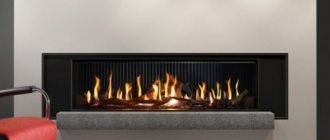Biofuel properties
Ethanol in the process of denaturation acquires properties of neutral impact on the environment. The material does not have a harmful effect on the human body, and its combustion is decomposition with the formation of a certain amount of heat, steam and carbon monoxide. When biofuel is used for a fireplace, it is possible to obtain even, beautiful tongues of fire.
The fuel is safe, odorless, does not produce smoke and burns without soot. This eliminates the need to install a smoke hood. The heat is not lost, it remains in the room. All this indicates that the efficiency is 95%. If we compare the appearance of the flame that is produced when burning biofuel with that produced when burning logs, then there are almost no differences. Biofuel is used in the form of a gel that contains sea salt. It allows you to achieve the characteristic crackling sound of firewood.
Types of biofuels

Biofuel for fireplaces is produced today in large quantities in Europe, North and South America. Brazil occupies a leading position in ethanol production. All biofuels produced in the world can be classified into several types, including:
- biodiesel;
- biogas;
- bioethanol
Biodiesel is obtained from vegetable oils, while biogas is a kind of analogue of natural gas. It is made from waste and garbage that undergoes special treatment. As for bioethanol, it contains alcohol and is a substitute for gasoline. If you need biofuel for your fireplace, you may want to take a closer look at biodiesel. It is based on processed vegetable fats of animal and microbial origin. The following oils are used as raw materials:
- soy;
- coconut;
- Palm;
- rapeseed
Food processing waste can be used in production. The development is based on the technology of producing biodiesel from algae. In Europe, the most commonly used biodiesel is oil-based.
Composition of bioethanol

Liquid biofuel for fireplaces can be represented by bioethanol. This is an alcohol that is obtained during fermentation from carbohydrates. The latter are found in corn, sugar cane, sugar and starch. The raw materials for production are trees, grasses and other cellulosic biomass. If you decide to use bioethanol, the product will be a colorless liquid that is odorless.
Biofireplaces: design, features, types
The design of the products is based on a fireplace that runs on liquid fuel. The element is made of steel, so it can easily withstand high temperatures. Alcohol is used for combustion, which burns evenly, brightly and without sparks. Thanks to this, the operation of the devices is characterized by safety. The heating unit has flame height adjustment, performed using a special damper. Biofuel consumption depends entirely on the model and intensity of the selected fire.
Fireplaces using alcohol are very diverse. They can be:
- desktop,
- floor,
- built-in,
- wall-mounted
Compact models for desktop placement are often purchased for apartments or decorating the interiors of cafes and restaurants. They are a small heating module, made in the form of some kind of decorative element or decorated with interesting motifs. These solutions are portable.
Floor products are large in size and can have beautiful finishes. A biofireplace with a portal is aesthetically not much different from wood-burning models, but does not have a great heating capacity. Living rooms are often decorated with similar designs.
A built-in eco-fireplace can be found both in the home and in other places - studies, offices, terraces, libraries, dining rooms and rooms for other purposes. These models are particularly beautiful because they can have a long line of fire. Among them you can find a corner option, which looks especially advantageous.
Wall-mounted biofireplaces perfectly complement your home interior and add charm to it. The devices are small in thickness and designed in the form of a simple, stylish fireplace. This option looks especially good in modern apartments.
Features of biofuels

When burned, biological fuel does not produce carbon monoxide, and there is no soot or soot. When working with fuel, fireplaces emit such an amount of soot, the volume of which is no more than when burning a regular candle. If ethanol is used as fuel, its combustion is accompanied by the release of only water and carbon dioxide. Therefore, the flame does not have the traditional orange hue.
In order to achieve naturalness, the described types of fuel are supplemented with additives. Due to them, the fire takes on an orange color and looks more natural and rich. Biofuel for fireplaces, the composition of which was mentioned in the article, can be used as an energy carrier to operate lighting devices. For example, a kerosene lamp, working in conjunction with biofuel, will not emit soot, there will be no smell, and if you use kerosene, there is no way to avoid such consequences.
Ethanol fireplaces are hazardous to health - scientists' conclusions
Chemists at the Fraunhofer Institute conducted a study that tested the safety of popular ethanol fireplaces. The team, led by Michael Wensing, examined four stoves and eight liquid and gel fuels
Chemists at the Fraunhofer Institute conducted a study that tested the safety of popular ethanol fireplaces.
The team, led by Michael Wensing, examined four stoves and eight liquid and gel fuels. Dr Wensing explained: “In purely theoretical terms, ethanol and bioethanol burn completely, producing carbon dioxide and water. But in real conditions, everything is different. Combustion depends on the quality and type of fuel, combustion temperature. But, as a rule, ethanol does not burn out completely. The results of the combustion process are carbon monoxide, a respiratory toxin; organic compounds (eg benzene, a carcinogen); irritating gases (nitrogen dioxide and formaldehyde).
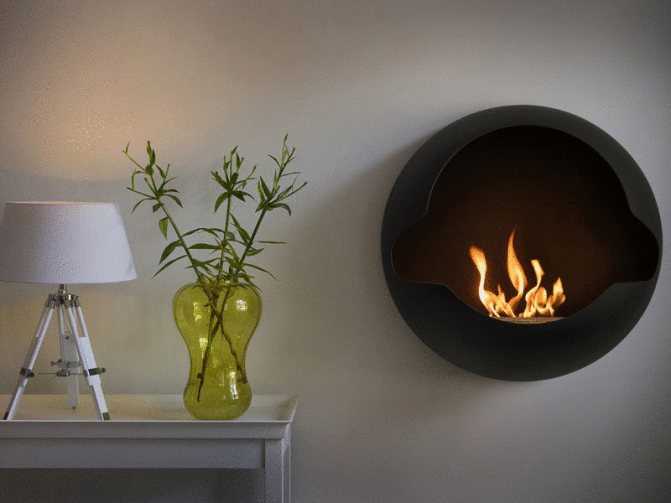
Scientists measured high concentrations of pollutants, and it turned out that standard values are often exceeded. For example, all devices exceeded the indoor guideline value of 0.35 mg/m3 for nitrogen dioxide; in one case, the result was significant: 2.7 mg/m3. As for formaldehyde, the air heaters also failed to meet the 0.1 ppm requirement. Here the maximum measured values were 0.45 ppm. One device reached a peak carbon dioxide output of 6,000 ppm, well above the hygienically acceptable threshold of 1,000 ppm.
A decisive factor here is also fuel consumption. This means that the more ethanol that is burned over a given period, the greater the amount of pollutants will be. At the same time, ultra-fine combustion particles are released. They have a diameter 10,000 times smaller than the thickness of a human hair, and they can penetrate deep into a person's lungs. According to Wensing: “Ethanol-based decorative heaters are a source of indoor air pollutants that are hazardous to health. In order to guarantee safe levels of air quality that do not pose a risk to human health, we recommend avoiding the use of these devices in the interior of the apartment. The unit should only be used in large, well-ventilated areas."
Testing wood-burning stoves showed a completely different picture. The researchers found: As long as the oven door is closed, its effect on indoor air quality can be neglected. Emissions only occur when the stove is lit and refilled with wood. At that point, the researchers were able to measure a brief spike in concentrations.
Biofuel production

If you want to use a biofuel fireplace at home, you can make a means for its operation yourself. Many pharmacies today offer ethanol, the concentration of which ranges from 90 to 96%. It is quite simple to produce liquid fuel based on it. For painting, you can use household purified gasoline, which is often replaced with lighter fuel. If you want to make sure the quality, you should check how transparent the product is and whether it has a smell.
In order to make biofuel for the fireplace with your own hands, you should add about 100 g of gasoline to a liter of alcohol. The composition is mixed, and it is recommended to use it immediately, since after some time the ingredients will separate. With this type of fuel, fireplaces operate without hoods or chimneys; however, the room should still be ventilated from time to time, this will eliminate the lack of oxygen and excessive humidity.
What is bioethanol

Bioethanol is a pure substance that does not harm human health and the environment; you can make it yourself, since its composition is not complex. Bioethanol is used for biofireplaces for a reason, there are a number of reasons for this:
- Its composition is very simple, and during use it does not emit harmful combustion products. The room and apartment will not be filled with foreign odors when using a bio-fireplace. Bioethanol does not form soot or burning, which is why it is much superior to kerosene and gasoline.
- The products of biofuel combustion are carbon dioxide and water. With such fuel, there is no need for a chimney or increased ventilation to get rid of the smoke, since there simply won’t be any. When installing a biofuel fireplace, you should simply ventilate the room regularly; this will prevent carbon dioxide from accumulating in the apartment.
- The fuel contains alcohol, which is the result of processing various plants containing sugar. These can be bananas and potatoes, corn and wheat, beets and other products. Only after the standard is denatured does the product go on sale. Bioethanol has a wide range of applications; it is used not only for the fuel block in the fireplace, but also for the manufacture of fireboxes and candles.
You can buy such fuel in a specialized store, but if you have the time and desire, you can make it yourself. During production, it is important to observe safety measures and the exact amount of ingredients, otherwise during combustion the fuel will click and flash during ignition.
Consumption and efficiency
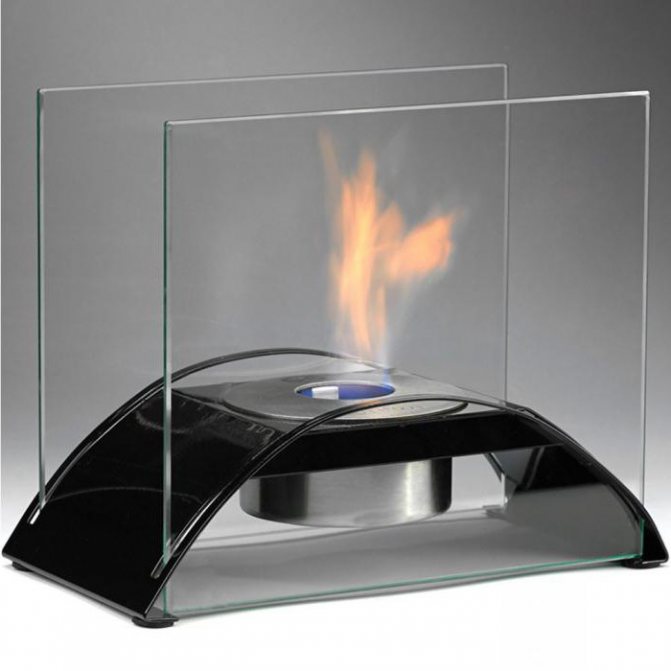
As practice shows, the efficiency of biofuels is approximately 95%. If you use odorless bioethanol, its average consumption per hour will be approximately 0.36 liters. If you burn 1 liter of the substance, you will be able to obtain approximately 5 kWh of thermal energy. If we compare an eco-fireplace with a 3 kW electric heater, then these devices are similar in efficiency. But the first will additionally humidify the air, while the second, on the contrary, will dry it.
If you want to get a natural-looking fireplace, then you should purchase a model with artificial logs. They are usually made of fire-resistant ceramics, and when exposed to elevated temperatures, they begin to turn red. Biofuel fireplaces, photos of which you can see in the article, can work by releasing the aroma of pine needles. To do this, use a few drops of essential oil. When burning, you will see a bluish flame, which is true for plant-based biofuels.
Review of manufacturers and prices
Modern manufacturers produce liquid for bio-fireplaces in canisters with a volume of 1, 1.5, 3 and 5 liters. Fuel in the form of a gel is poured into tin cans. They always indicate the dosage. The price per container may vary from different manufacturers.
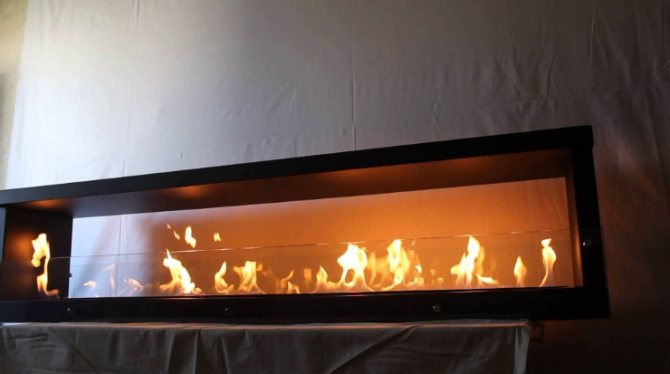
Biofuel is suitable for all types of interior fireplaces
Among the popular brands of biofuel it should be noted:
- Kratki (Poland). This high-quality product perfectly humidifies the air without emitting smoke or odor. It is produced in 1 liter bottles. This amount is enough for 3-5 hours of operation of the biofireplace. Kratki has a wide range of fragrances. The price for fuel varies between 700-1,500 rubles.
- Bioheat (Russia). Canisters are produced in 1.5 or 5 liters. In an hour, the product is consumed in a volume of 0.36 liters. The average price for 5 liters is 1,250 rubles.
- Planika Fanola (Australia). When creating products of this brand, a special formula is used. 1 liter of eco-fuel of plant origin is enough for 3-5 hours of fireplace operation. One bottle costs between 250-400 rubles.
Biofuels are also produced in the USA, Canada, Europe, Brazil, China and India. Modern people are increasingly thinking about ecology and environmental protection, so fireplaces running on clean fuel are quickly replacing classic and gas models.
When choosing fuel for biofireplaces, the composition of which is environmentally friendly, you should check the certificates with the product seller. All liquids are characterized by the same components. They are distinguished only by fragrances. Pure and high-quality alcohol should not contain harmful impurities.
Advantages and disadvantages of biofuels
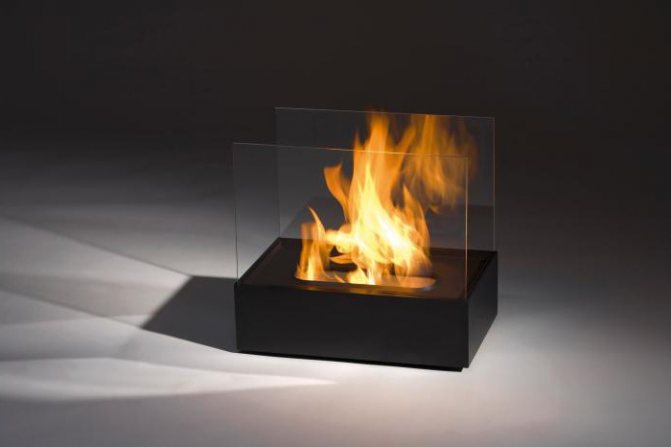
A biofuel fireplace without a chimney can be purchased today at any relevant store. Such equipment runs on a special substance, which has some pros and cons. For example, efficiency and consumption are the factors that concern consumers first. In just one hour of operation, a modern biofireplace will burn 500 ml of fuel. The amount of heat generated will be equal to 6.58 kWh per liter of biofuel.
In terms of efficiency, such equipment is quite attractive. Among the additional advantages is that biofuel is a clean product from an environmental point of view. You can regulate the combustion. The use of additional hoods and other expensive equipment is excluded. Burners can be easily cleaned after burning biofuel.
The biofireplaces themselves have reliable thermal insulation of the body, so during operation they have demonstrated fire safety and reliability. If necessary, the equipment can be dismantled and assembled in the shortest possible time. Bioethanol is easy to transport. Heat transfer will be 100%, because there is no heat loss. There is no need to prepare firewood; dirt and debris will not form in the house. Combustion prevents the flame from returning. Fuel is affordable, which is essential for the family budget.
Among the disadvantages, only minor details can be identified; they are expressed in the fact that biofuel cannot be drained while the fireplace is operating. It is not allowed to store the substance near an open flame. It is not recommended to light fuel using logs or paper; special iron lighters are available for sale for this purpose.











